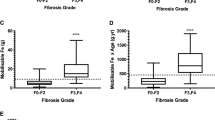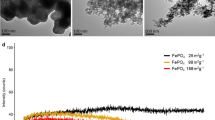Abstract
Objectives: The iron fortification of food in Sweden, the highest in the world, was withdrawn 1st January 1995, because the effect upon target groups was considered to be uncertain. We wanted to study the effect of such a dietary experiment.
Design Comparative cross over study.
Setting Out patient service and Blood Bank.
Subjects Sixteen men aged 24–73 y on maintenance phlebotomy after treatment for iron overload. One was excluded because of inflammatory disease.
Interventions Quantitative phlebotomy with serial measurements of Hb conc., % transferrin saturation and serum ferritin concentration.
Main outcome measures Iron absorption was measured by phlebotomy during two periods, with and without iron fortification. 1 g Hb=3.4 mg Fe.
Results Iron absorption was significantly reduced (P<0.001) when iron fortification was withdrawn from a mean of 4.27±1.2 to 3.63±1.1 mg/d. The difference of 0.65 mg/d (95% c.i. 0.32–0.97) corresponds to the fraction of iron derived from fortification. Intervals between donations had to be extended from 59±15 to 69±17 d (P<0.01) to avoid induction of iron deficiency anemia. The iron content of the fortified diet averaged 15.4 mg/d, of which the fortified fraction constituted 4.1 mg/d (27%). The relative bioavailability of carbonyl iron used as fortificant was 38%.
Conclusions The relative bioavailability of carbonyl iron used as fortificant was higher than previously reported. Target groups such as menstruating females will probably be affected by a higher prevalence of iron deficiency when food is no longer fortified. People with genetic hemochromatosis will accelerate into clinical disease at a slower rate.
Sponsorship This study was funded by the National Food Administration.
This is a preview of subscription content, access via your institution
Access options
Subscribe to this journal
Receive 12 print issues and online access
$259.00 per year
only $21.58 per issue
Buy this article
- Purchase on Springer Link
- Instant access to full article PDF
Prices may be subject to local taxes which are calculated during checkout
Similar content being viewed by others
Author information
Authors and Affiliations
Rights and permissions
About this article
Cite this article
Olsson, K., Väisänen, M., Konar, J. et al. The effect of withdrawal of food iron fortification in Sweden as studied with phlebotomy in subjects with genetic hemochromatosis. Eur J Clin Nutr 51, 782–786 (1997). https://doi.org/10.1038/sj.ejcn.1600488
Received:
Revised:
Accepted:
Issue Date:
DOI: https://doi.org/10.1038/sj.ejcn.1600488
Keywords
This article is cited by
-
Haemochromatosis
Nature Reviews Disease Primers (2018)
-
The importance of bioavailability of dietary iron in relation to the expected effect from iron fortification
European Journal of Clinical Nutrition (2008)
-
Reduction of plasma homocysteine and serum methylmalonate concentrations in apparently healthy elderly subjects after treatment with folic acid, vitamin B12 and vitamin B6: a randomised trial
European Journal of Clinical Nutrition (2003)



